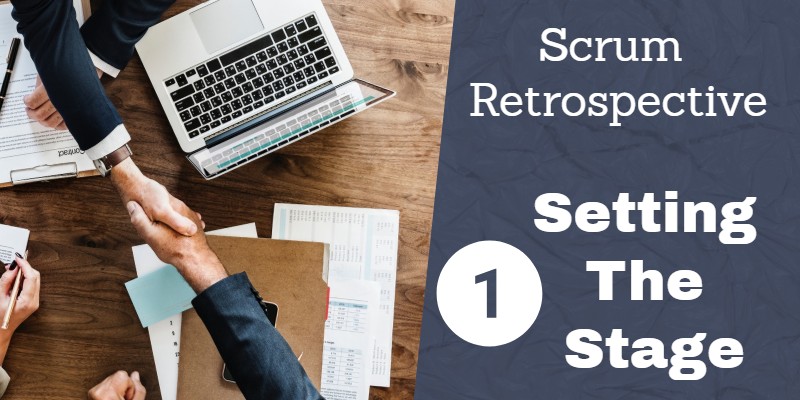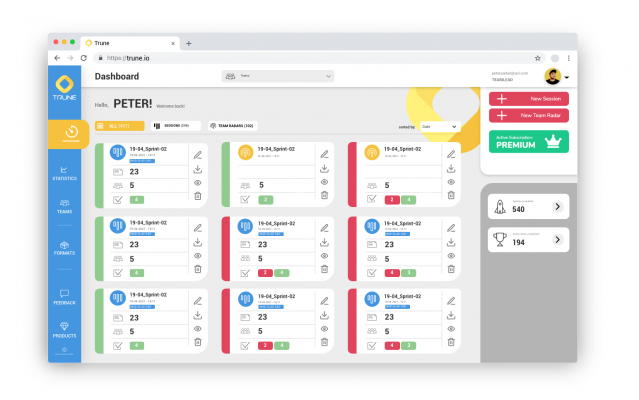This is the first post of my blog post series about the five phases of a Scrum Retrospective. I will cover the most crucial ideas for Phase 1 — Setting the stage.
These five phases are presented in the book Agile Retrospectives – Making Good Teams Great by Esther Derby and Diana Larsen. They are:
- Setting the stage
- Gather Data
- Generate Insights
- Decide What to Do
- Close the Retrospective
I use this five-step-approach as a guideline in each of the retrospective meetings, which I lead as a Scrum Master.
In this post I will explain what the leader of an agile retrospective needs to know and should do in order to have a successful start of the retrospective meeting.
Setting the stage
The goal of the first phase is to bring the mind of the team to the retrospective meeting so they have their focus on the work at hand.
You want to set an environment where everybody feels save to speak. Everyone should be in a state that he feels like he wants to contribute his thoughts and ideas as much as possible.
People have been working on other tasks just a few minutes ago before they had to stop and go to the retrospective meeting.
Their mind is still filled with the thoughts of their previous task. For example, one colleague might still be thinking hard on how to solve that bug he is currently working on.
The goal for you as the leader of the meeting is to bring the focus of the team to the work at hand.
What, Why, When
In order to set the stage for the meeting you are starting with a short introduction giving some facts about the meeting itself.
You mention the goal of the meeting, which is to reflect on the previous sprint. And you announce the available time for the meeting, giving the participants an outlook on what they can expect how long they will be locked up in this meeting room.
For instance you might say something like this:
Here we are again at the end of our sprint—this time we completed sprint number 56. Let’s look back together and figure out what went well and what didn´t so we can improve our process and become even more productive. Now it´s 4 minutes past 2, so we have exactly 56 minutes to come up with some results.
After this announcement you should have the groups attention.
I learned that there is another important part of Setting the stage, which is to get everybody to say a few words.
Get everybody to speak up
At the start of a retrospective it is important that everyone says something out loud. If you speak out loud at the beginning of the meeting the chance that you are going to join the follow-up discussion increases drastically.
I couldn’t find where I have read about this fact, but I remember that it was packed with some awesome statistics. Since then I always perform this little exercise at the beginning of a meeting.
There are a couple of possible activities in order to give everyone the chance to speak up.
I usually just ask a simple, open-ended question and ask the people to answer shortly one after another going around in a circle.
The question might be: How do you feel about the previous sprint on a scale from 1 to 5?
Another example is to ask the participants to state in one sentence what they want to get out of this retrospective meeting.
And another example might be: Tell us how you feel about the previous sprint in maximum of 3 words!
The retrospective leader has to make sure that the statements are really short, which means just a few words. You want to avoid that people start a discussion at this stage. You just want to get everybody to speak up to generate the mind-shift and enable maximum contribution of everybody in the next phases.
When everyone has put some thoughts to answer the question then the group should have the focus on this meeting. Everyone has put his previous task on hold and put his attention to the work at hand. The mindset of the group is in a state of getting some work done.
Next: Phase 2
At this point you are finished with Setting the stage and you move forward to the next phase, which is: Phase 2—Gather data.
You can read about the next post in this blog post series here: Phase 2—Gather data.
Meanwhile I would be interested in how you kick-off your Scrum retrospective meeting and what you do differently. Do you have any interesting insights, which you can share in the comments?
Ok, that’s it for today. See you in a bit, and HabbediEhre!


Amazing, please keep it up and I am waiting for your book.
It’s really a cool and helpful piece of information. I am happy that you shared
this useful info with us. Please stay us up to date like this.
Thanks for sharing.